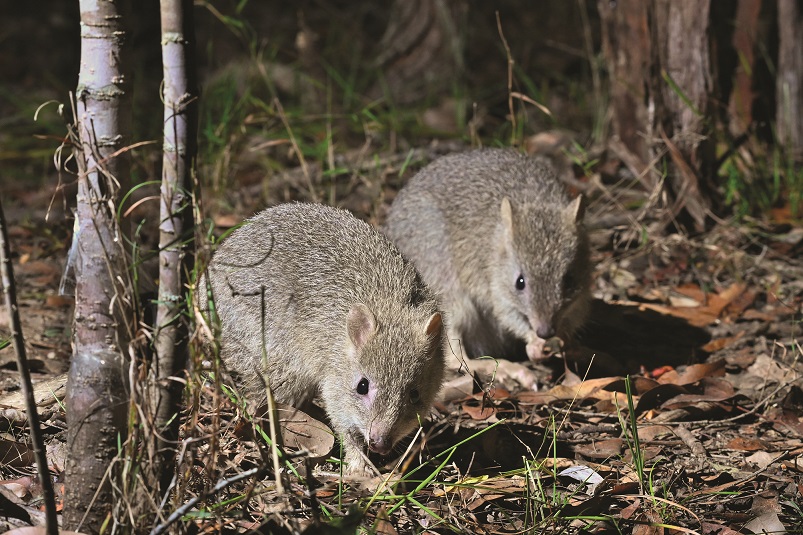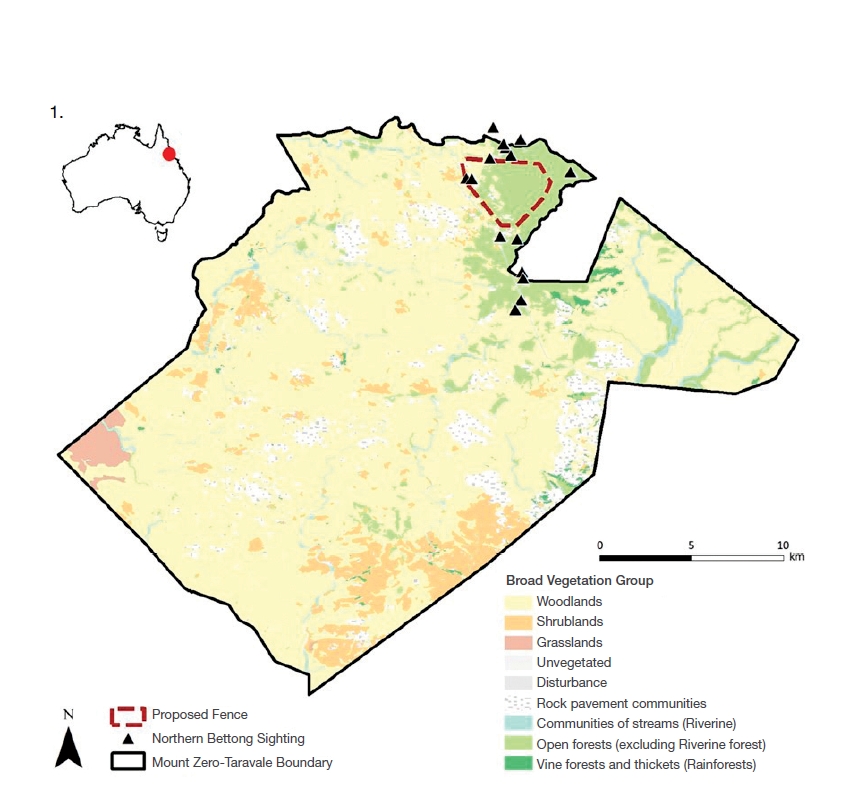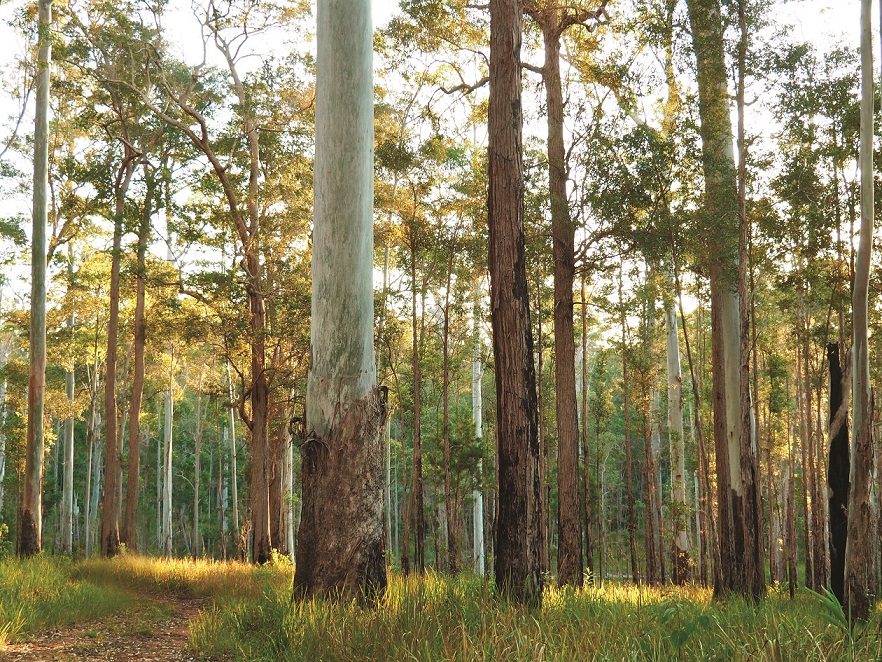By Dr Alexander Watson, North-east Regional Ecologist
The survival of Australia’s Northern Bettong (Bettongia tropica), a tiny, nocturnal macropod, hangs in the balance. Its population once extended from central Queensland to the Wet Tropics, but since European colonisation, its distribution has collapsed. The species is confined to a narrow band of tall, fire-dependent eucalypt forests and woodlands adjacent to the rainforests in North Queensland. Only two small populations remain – estimated at fewer than 1,000 individuals in the Lamb Range area, and as few as 100 on the Mount Carbine Tableland. Sadly, the Northern Bettong has made it into the list of Australia’s 20 mammal species at greatest risk of extinction.
The loss of the Northern Bettong would be a tragedy for conservation and may have long-term negative consequences for the ecological communities of which they are a part. The bettongs eat a diversity of ectomycorrhizal fungi that form symbiotic relationships with eucalypts and other tree species, dispersing the spores and delivering an important ecosystem service.
 © Wayne Lawler/AWC
© Wayne Lawler/AWC
Key threats to survival
It is hard to imagine that the success of rainforest plants invading neighbouring eucalypt forests and woodlands is contributing to the loss of the Northern Bettong and to Australian biodiversity in general. Yet, in parts of North Queensland, the lack of regular fire leads to a transition from open eucalypt forests to rainforest. In the new ecosystems, many species, such as the predatory Northern Masked Owls (Tyto novaehollandiae kimberli), and arboreal mammals such as Yellow-bellied Gliders (Petaurus australis) that rely on the eucalypts, will eventually decline and disappear.
The plight of ground-dwelling species such as the Northern Bettong is particularly dire in these open eucalypt forests. This is not only due to rainforest invasion but also predation by feral cats and, potentially competition with feral cattle.

Northern Bettong Recovery Team
Australian Wildlife Conservancy is taking action to conserve the species. AWC is a long-standing member of the Northern Bettong Recovery Team, working with Traditional Owners and Rangers from Wadjanbarra Tableland Yidinji Aboriginal Corporation, Gugu Badhun Aboriginal Corporation, Western Yalanji Aboriginal Corporation, Djabugay Aboriginal Corporation and Girringun Aboriginal Corporation, as well as Queensland Parks and Wildlife Service representatives, scientists from the Wet Tropics Management Authority, and local landholders. Together, we have developed a bold plan to re-establish a population of the species at AWC’s Mount Zero-Taravale Wildlife Sanctuary, north-west of Townsville.
Establishing a safe haven at Mount Zero-Taravale
Northern Bettongs were once found at Mount Zero- Taravale but are thought to have disappeared from the property around the time it was acquired by AWC in 2002-03. As part of the land management program implemented over the last 18 years, AWC has removed grazing animals, controlled weeds, and re-established appropriate fire regimes. The open grassy understorey of the tall eucalypt forests, key habitat for the Northern Bettong, is making a positive recovery through these efforts, as well as through a targeted program aimed at reducing ‘woody thickening’ and rainforest invasion.
To secure the future of the species, AWC will build a feral predator-proof fence around 950 hectares of this key habitat to create a safe haven for the Northern Bettong, as well as a suite of other native species at risk of predation by feral cats.
 © Joey Clarke/AWC
© Joey Clarke/AWC
Delivering a great ecological ‘return’ on investment
The overarching conservation outcome for the project is the re-establishment of a secure, genetically viable population of Northern Bettongs. This project is expected to generate a significant ecological ‘return’ on investment: based on AWC’s experience with similar species, we expect that the founding population (predicted to be 30-50 individuals) will increase to more than 500 individuals over five years within the fenced area. This represents a 50 per cent increase to the total global population of the species. Such a population boom can occur because Northern Bettongs are non-seasonal breeders, capable of producing up to three young per year when conditions are favourable.
Re-establishing these animals will help to restore ecological processes, particularly dispersal of ectomycorrhizal fungi. AWC will undertake research to assess how the Northern Bettong influences the ecology of the broader open eucalypt forest ecosystem.
Through the generosity of AWC supporters and a grant from the NSW Wildlife Information Rescue and Education Service (WIRES), we plan to bring Northern Bettongs back to the tall open forests of Mount Zero- Taravale next year. Significantly, this will be the first time AWC has extended its network of feral predator-free areas and endangered mammal reintroduction program into northern Australia.
Read and download this full issue of Wildlife Matters here.
Please help us secure the future of the Northern Bettong